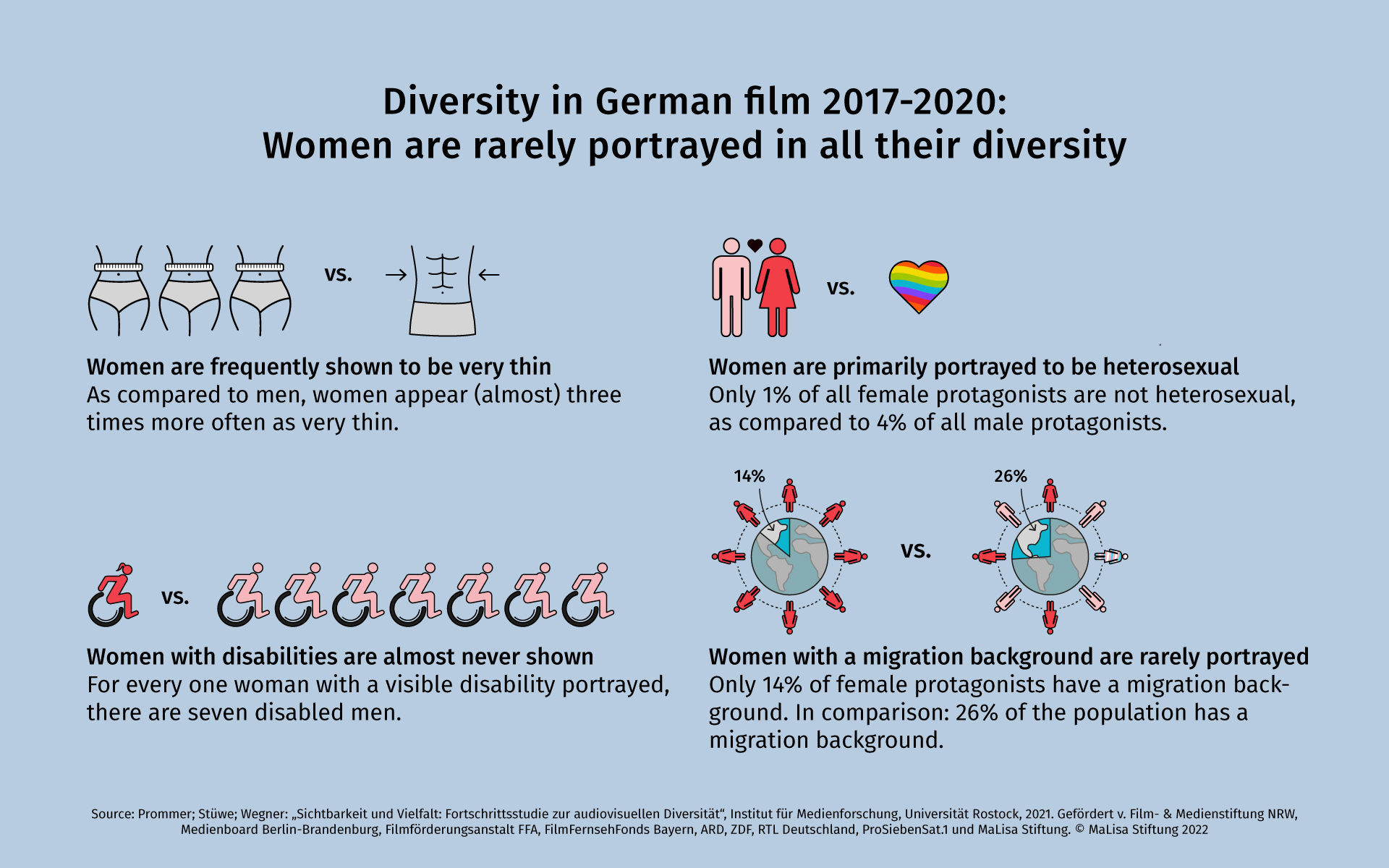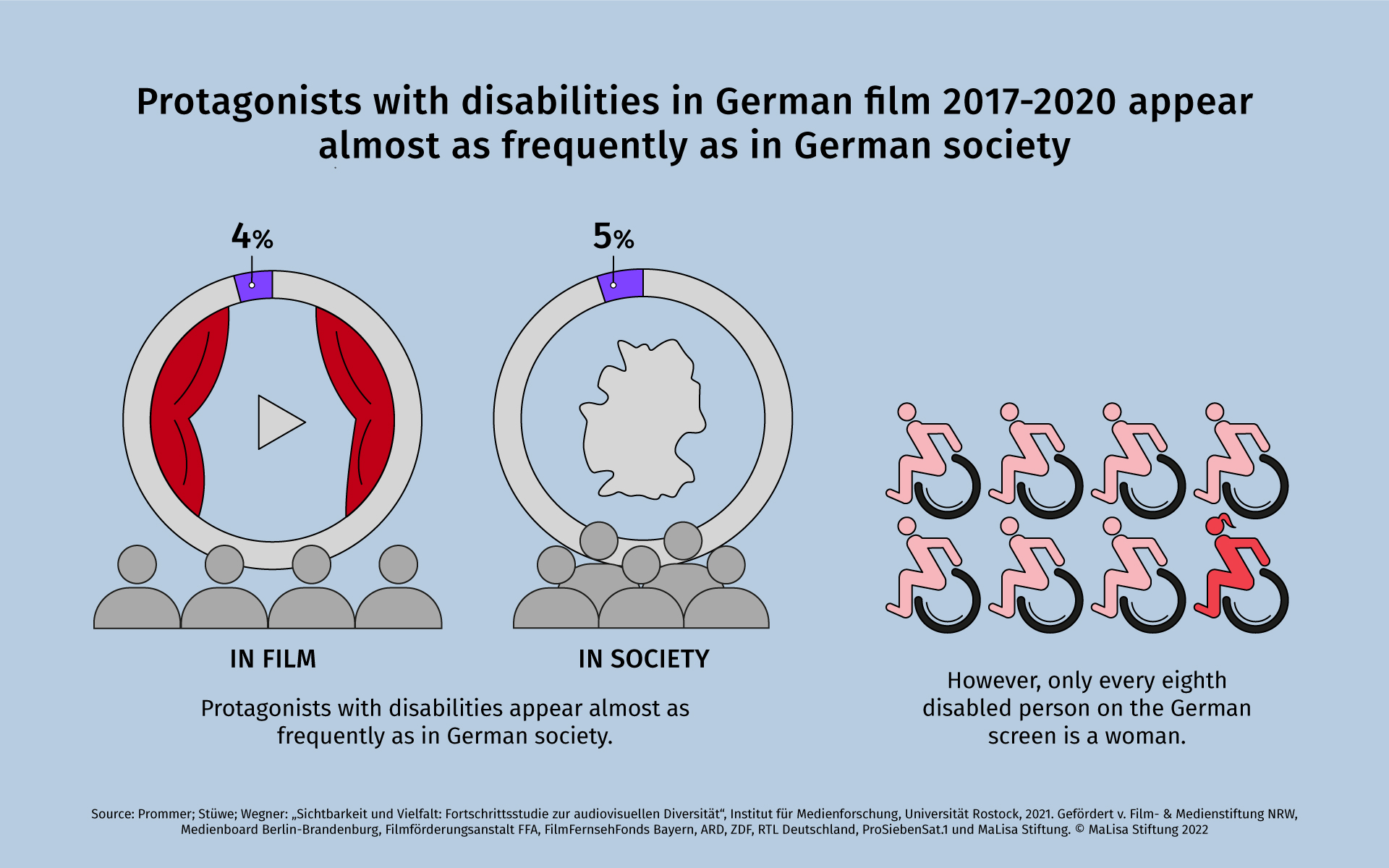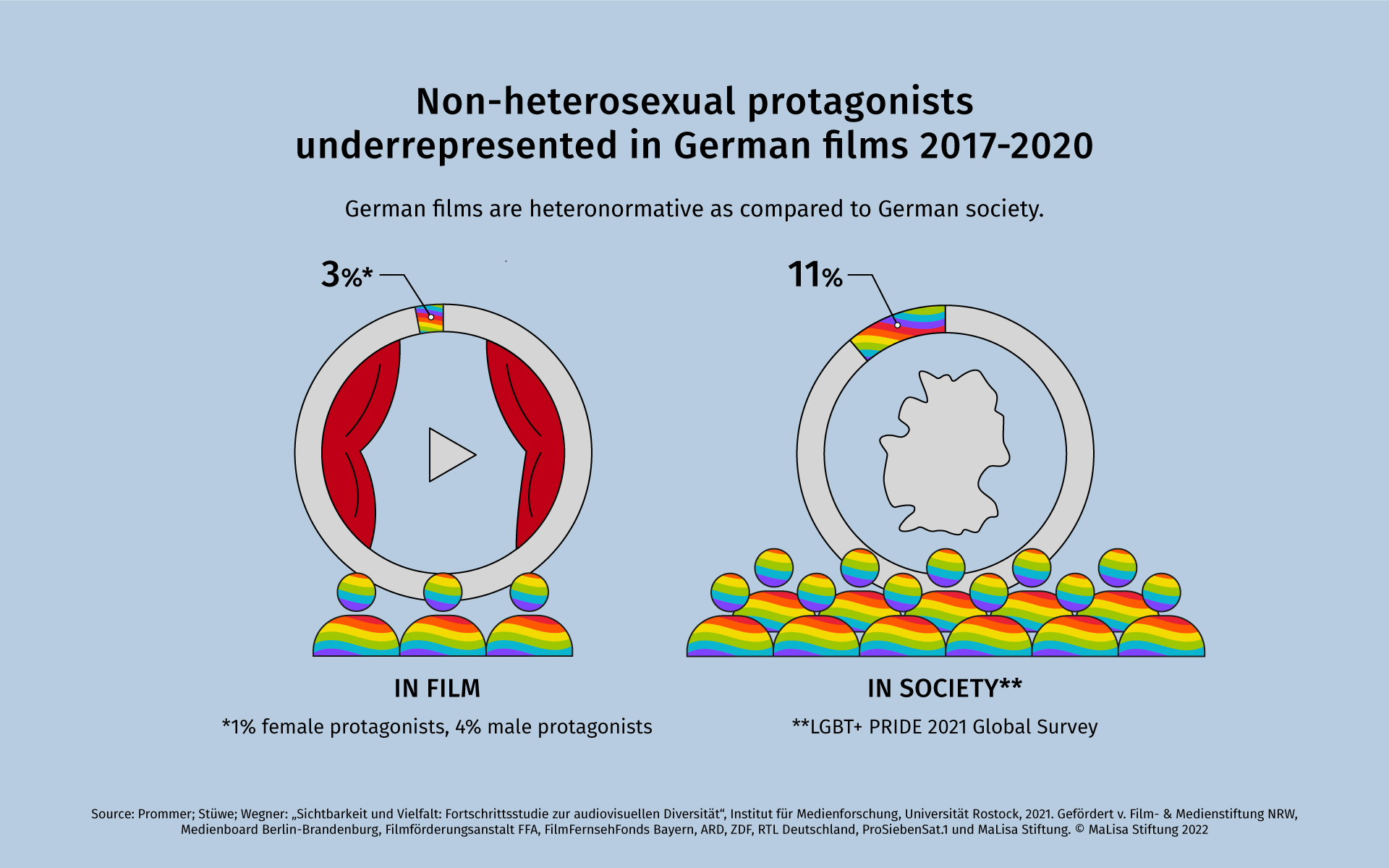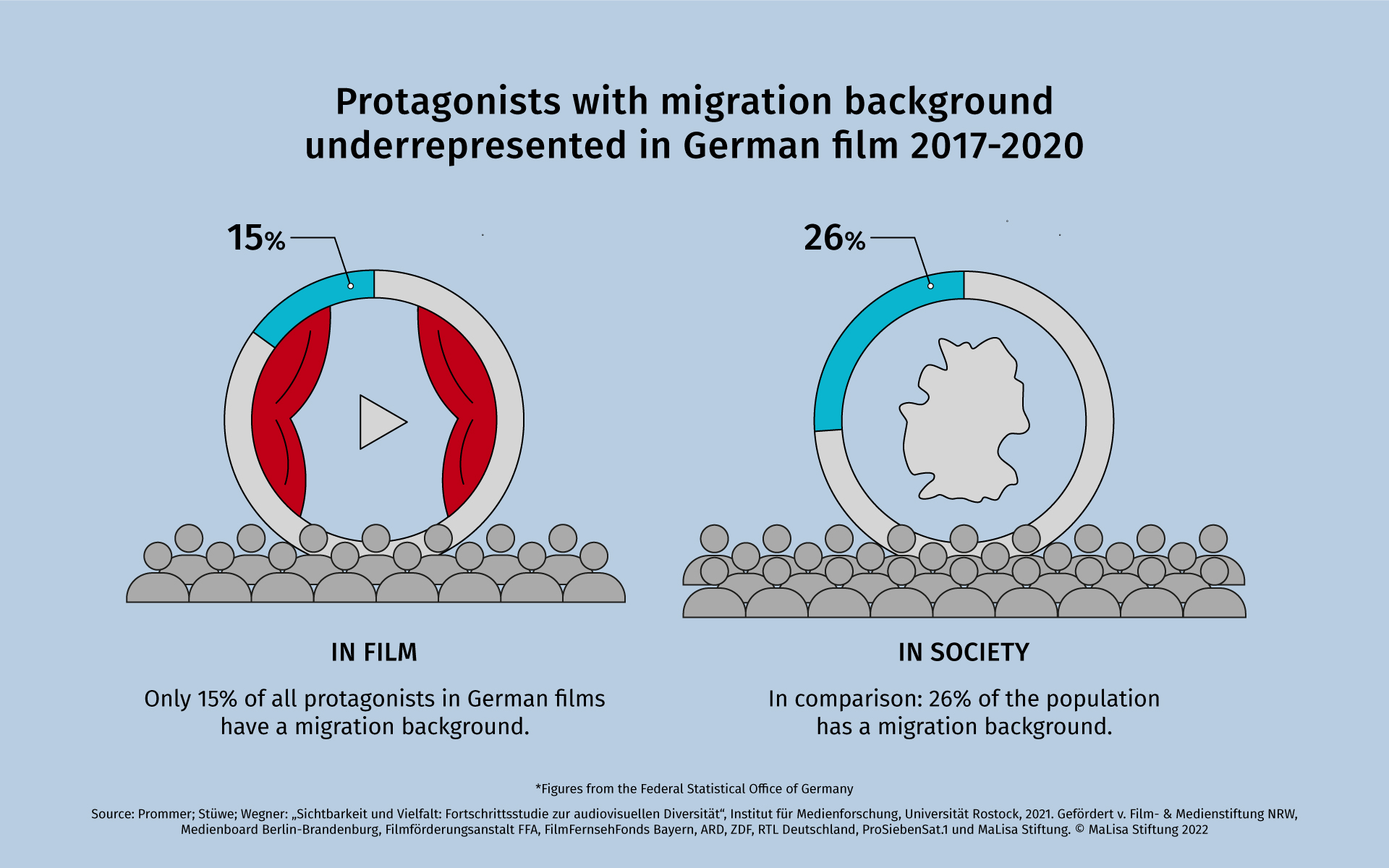UNITED FOR DIVERSITY – UNIVERSITY OF ROSTOCK PRESENTS NEW RESEARCH RESULTS AT CONFERENCE

From March 25 to 27, 2022, FILMFEST MÜNCHEN and the Evangelische Akademie Tutzing have organized a conference on the topic Seeing and being seen. Participation in Film. In the opening program, Professor Dr. Elizabeth Prommer from the University of Rostock will present new results from the study initiated by the MaLisa Foundation on diversity in German cinema. This will be followed by a roundtable discussion with Elizabeth Prommer, Thelma Buabeng and Maria Furtwängler, moderated by Boussa Thiam. The event will be publicly accessible as a livestream.
An analysis by the University of Rostock, launched with the MaLisa Foundation and its partner institutions, investigated the question of whether the diversity of German society is represented in German cinema. The results regarding the diversity criteria gender and age were published in February. On March 25, Prof. Dr. Elizabeth Prommer, Director of the Institute for Media Research at the University of Rostock will present additional current results. These further findings address the dimensions of migration background, ethnic attribution, sexual orientation and disability, and they reveal a clear lack of diversity on the screens of German cinemas.
ZENTRALE ERGEBNISSE

Women are rarely portrayed in a diverse way
Varied sexual orientations, people with a migration background and people of color are not as visible in their diversity on screen as in the population in Germany. It is striking that men are represented more frequently than women in almost all diversity categories. Women, on the other hand, are often portrayed in the context of partnerships and relationships and are shown to be slim, heterosexual and without disabilities.

Protagonists with disabilities appear almost as frequently as in the population
People with disabilities appear in German cinema almost as often as they do in society. However, this applies primarily to male protagonists. Women with disabilities are very rarely portrayed in German films.

Non-heterosexual protagonists are underrepresented
German motion pictures are very heteronormative overall: Only about three percent of the protagonists can be perceived as non-heterosexual. By comparison, according to a representative study by IPSOS in 2021, about eleven percent of Germans classify themselves as non-heterosexual.

Protagonists with a migration background are significantly underrepresented
Menschen mit Migrationshintergrund stellen im deutschen Kino lediglich 15 Prozent aller Protagonist*innen dar, im Vergleich zu ihrem Anteil in der Bevölkerung von über 26 Prozent.
People with a migration background make up only 15 percent of all protagonists on in German film, compared to over 26 percent in the population.
On the definition of „migration background“, please see “Visibility Put to the Test: Progress Study on Audiovisual Diversity: Cinema & Diversity” (in German).
The independent study was conducted by Professor Elizabeth Prommer of the Institute for Media Research at the University of Rostock. It was funded by the Film- und Medienstiftung NRW, theMedienboard Berlin-Brandenburg, the German Federal Film Board FFA, the FilmFernsehFonds Bayern, the public broadcasters ARD and ZDF, the private broadcasters RTL Deutschland and ProSiebenSat.1, and the MaLisa Foundation.

March 25 – 27, 2022
The conference “Seeing and Being Seen: Representation in Film” brings together a large number of representatives of the film industry. It is organized by FILMFEST MÜNCHEN, together with the Evangelische Akademie Tutzing, and sponsored by FFF Bayern. The goal is to focus on post-migrant perspectives and analyze how they will be represented in the German film and television landscape in 2022.
